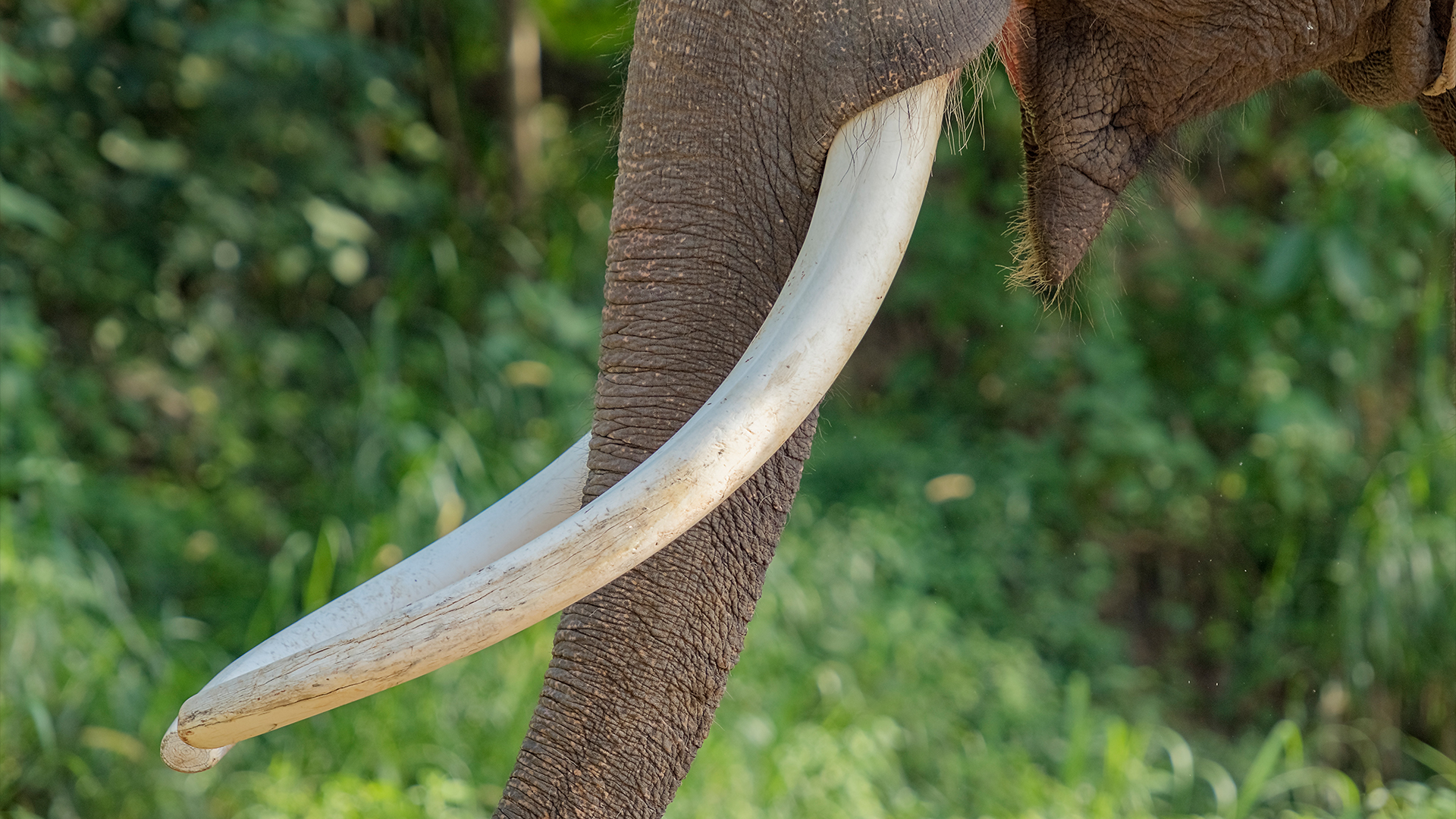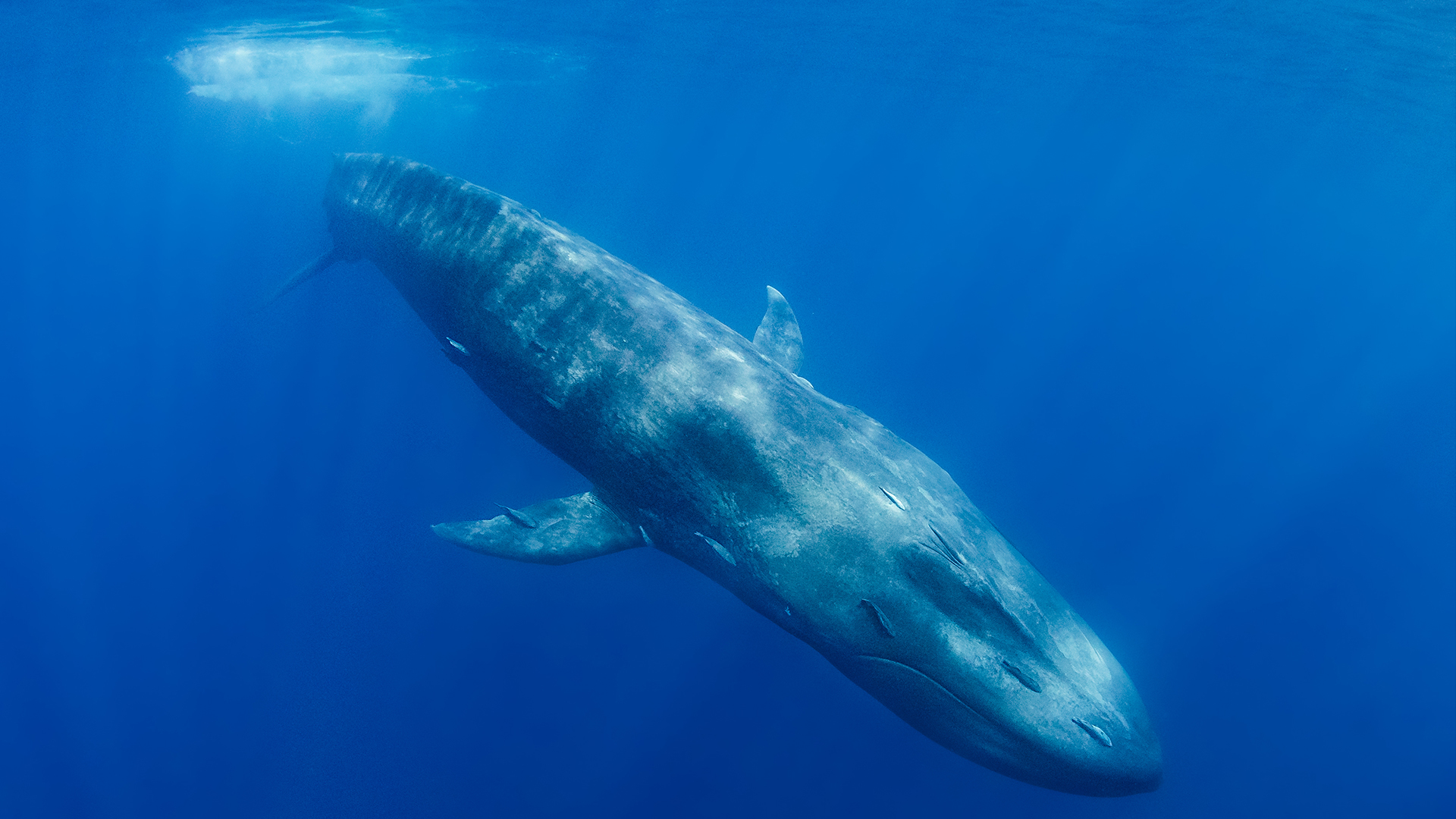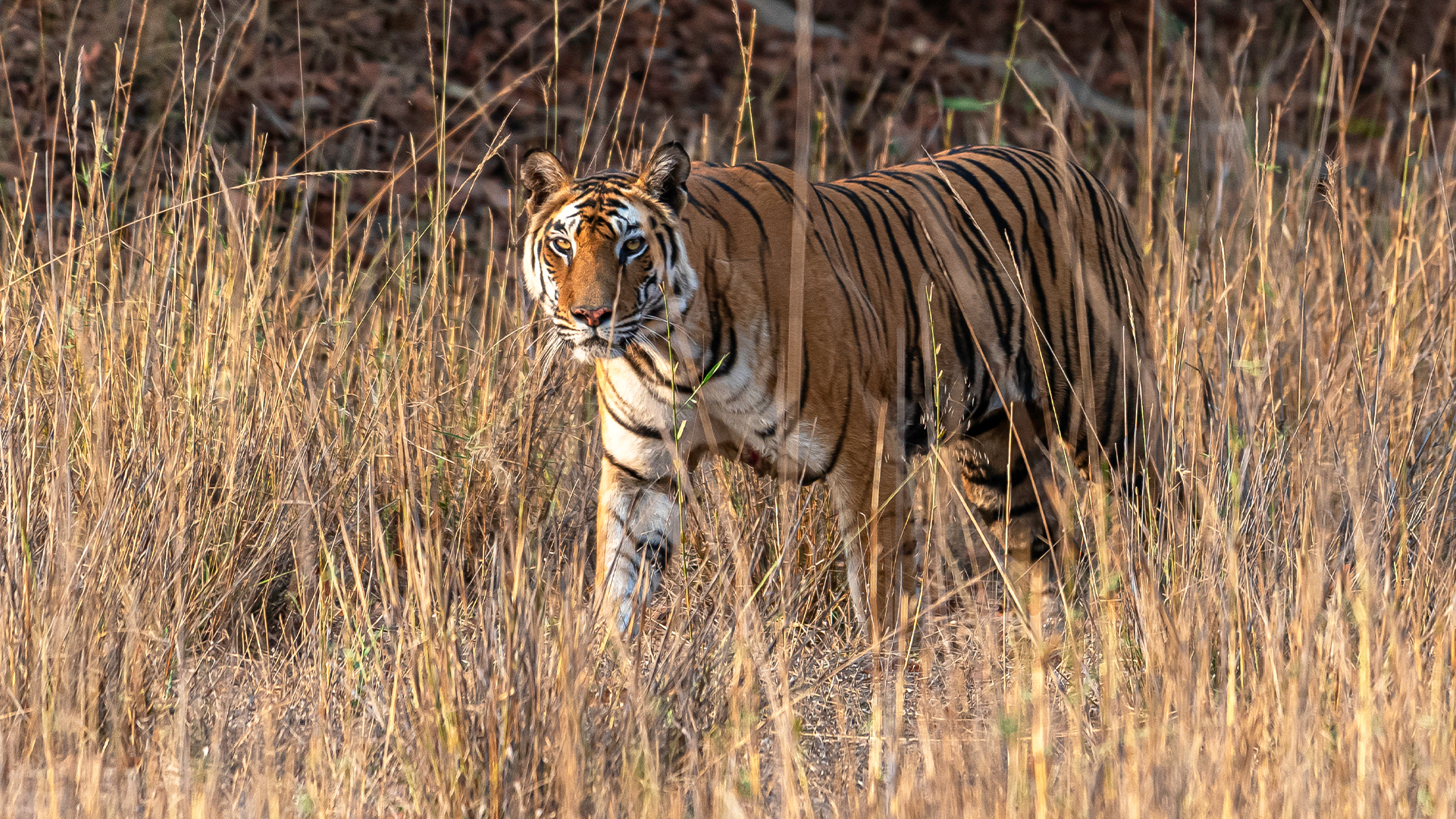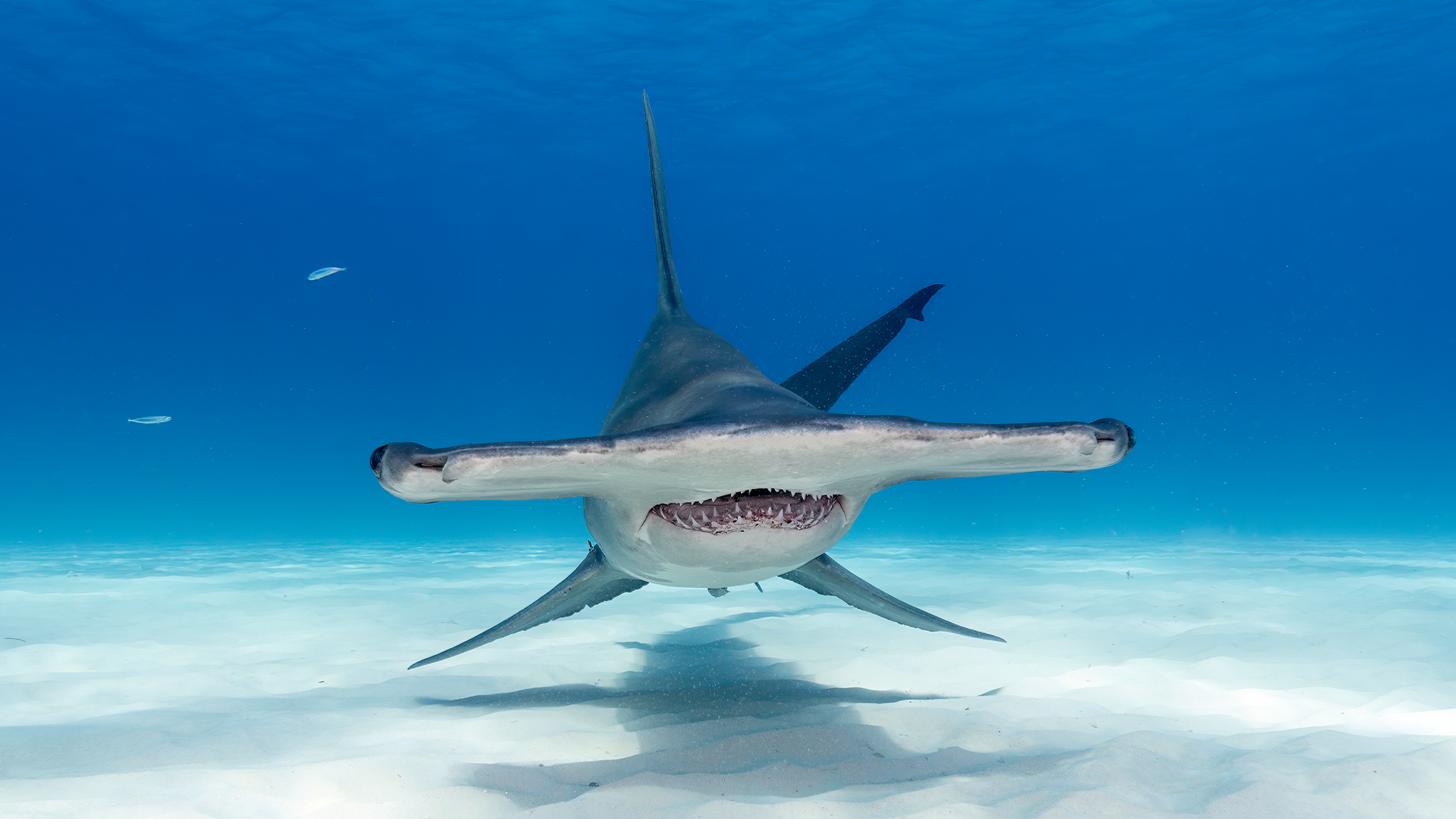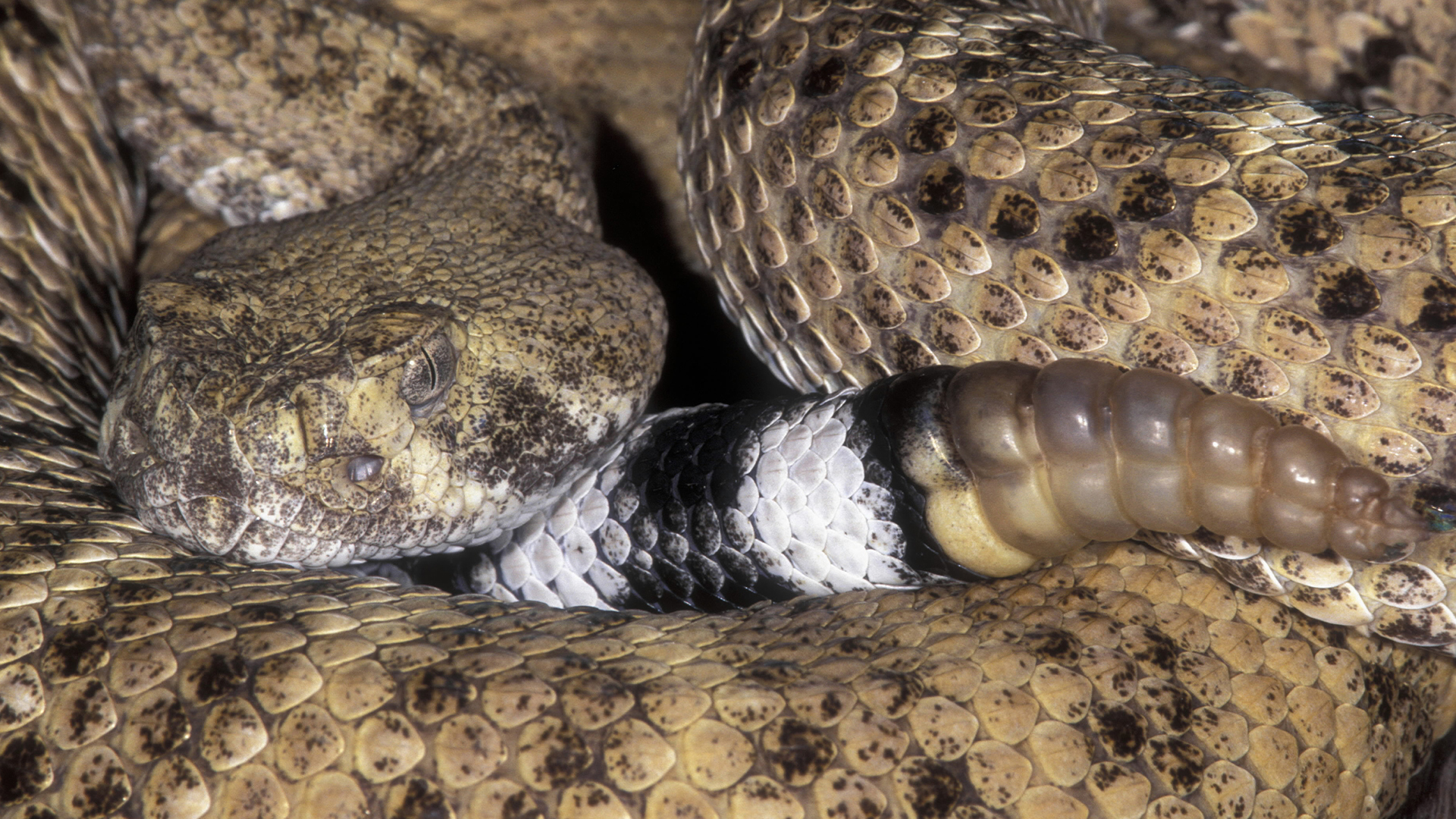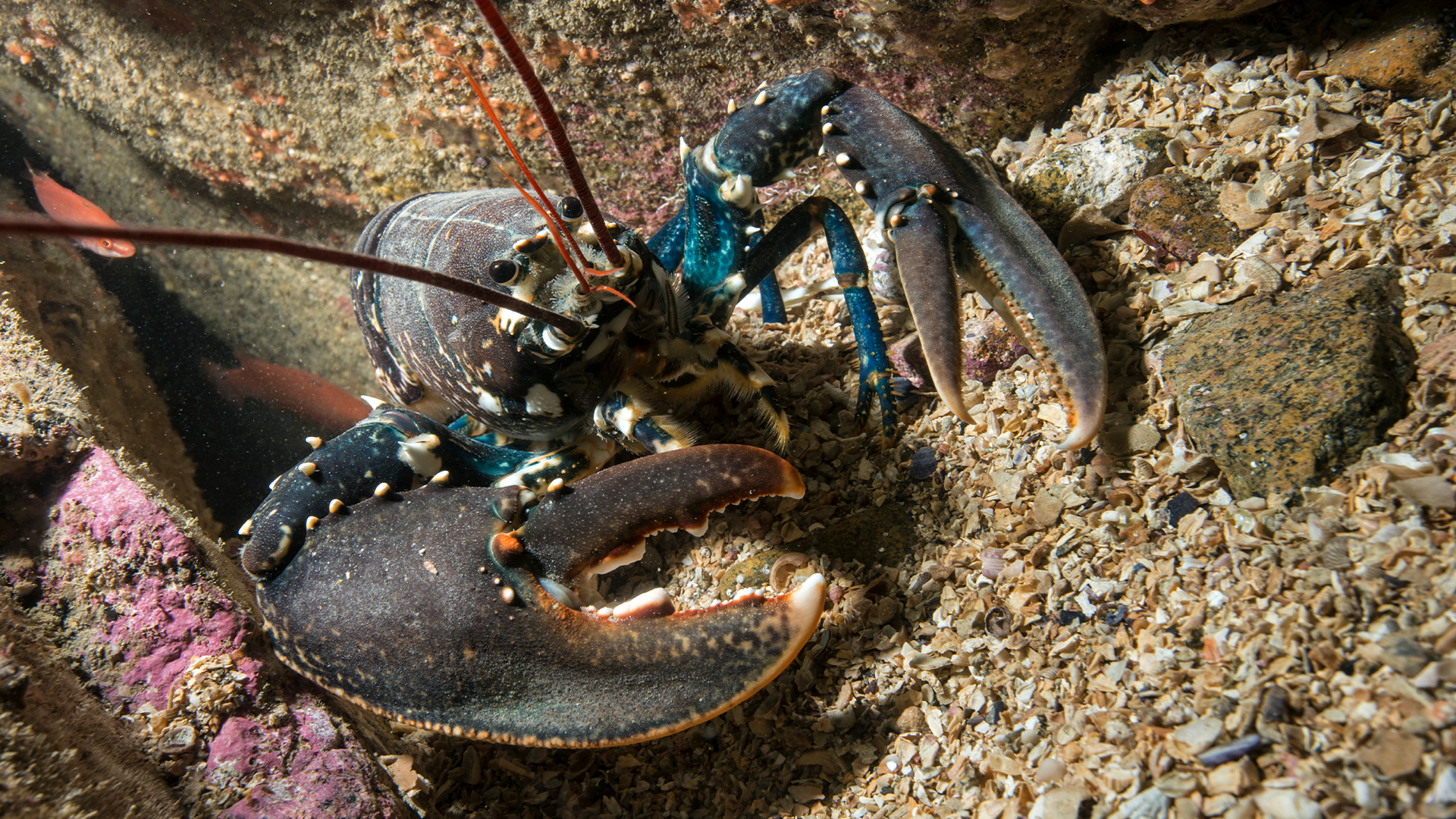How 10 animals evolved their iconic features
Why are whales so big? Why are giraffe's necks so long? Here are the origins of 10 iconic features in the animal kingdom.
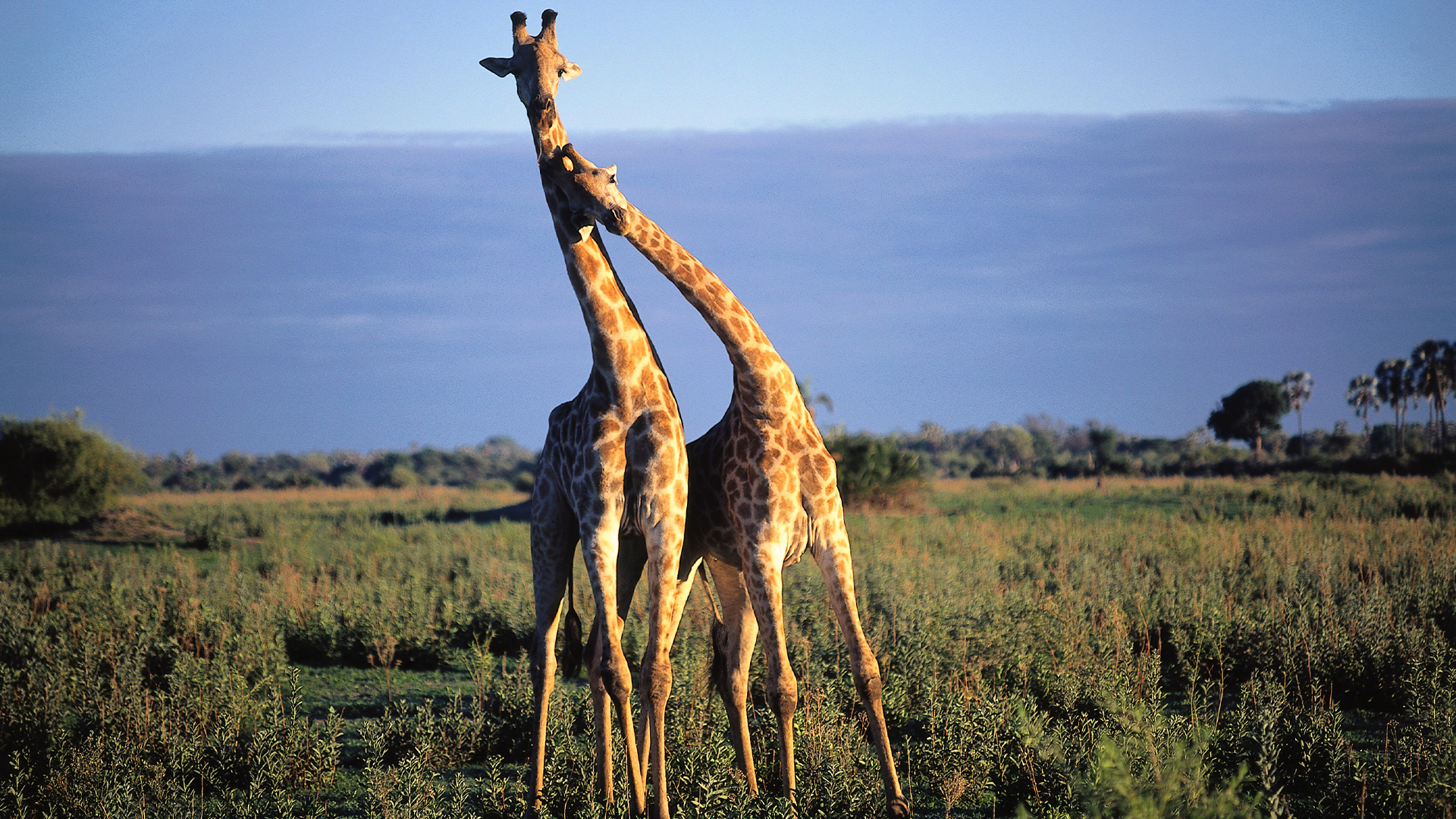
Animals come in all shapes and sizes, and many have iconic features that make them memorable. From the long necks of giraffes to the oddly shaped heads of hammerhead sharks, here's how 10 remarkable animals evolved their signature features.
Related: How long do new species take to evolve?
1. Turtle shells
For years, scientists debated how turtle shells evolved. According to a report published in the journal Current Biology, paleontologists once believed that the shell was formed through the fusion of osteoderms — bony deposits that make up the protective scales on crocodiles and armadillos. But developmental biologists disagreed with this theory, given how the embryos of modern day turtles develop. Instead, they believed the ribs underneath turtle ancestors' bodies fused and gradually united over the body to form the shell.
The debate wasn't settled until 2008, when Chinese scientists discovered the fossil of Odontochelys semitestacea, whose name means "half shelled turtle with teeth." Although the fossilized animal's shell was incomplete, it had no osteoderms and showed widening of the ribs, confirming the developmental biologists' theory. Scientists say it represents an intermediate step in the evolution of the turtle shell. The later stages of evolution are shown in fossils of the genus Proganochelys.
2. Giraffes' long necks
Giraffes' necks can be up to 10 feet (3 meters) long, allowing the animals to reach leaves high up in trees. But they didn't always have this impressive feature.
Discokeryx xiezhi is a sheep-size, ancient relative of modern day giraffes that lived around 17 million years ago during the the early Miocene epoch (23 million to 5.3 million years ago). It had a stumpy neck and a disk-shaped, thick skull. Scientists in 2022 proposed that the thick skulls of D. xiezhi evolved to withstand massive blows to the head during fights between males. Those same bouts fueled the growth of their necks to aid in fighting. This is called the "necks for sex" hypothesis and suggests competition led to longer necks developing. Males who won fights more often passed these genes onto their offspring than did the losers, eventually leading to the giraffes we see today.
3. Elephant tusks
Elephants have deeply rooted tusks protruding from their mouths that grow continuously. These tusks are actually enormous teeth that give the pachyderms an evolutionary advantage when digging, lifting objects, stripping bark of trees and protecting themselves.
Get the world’s most fascinating discoveries delivered straight to your inbox.
The earliest known tusks are found in Dicynodonts, a group of stocky, pig-like herbivores that lived 270 million years ago and had unique pointed beaks with protruding teeth on either side.
Members of this clade with true tusks were also missing several teeth. Researchers theorized that it may have been more energetically favorable to develop tusks that continuously grow, rather than replacing teeth that may have fallen out. They also suggested that the tusks evolved independently in different populations over time. When the tusks developed, soft tissue ligaments formed, anchoring the large teeth to the jaw.
4. Blue whales' gigantic size
Blue whales (Balaenoptera musculus) are the biggest animals to have ever lived. Their size makes it hard to believe the mammoth sea mammals evolved from a dog-sized ancestor, Pakicetus. According to a 2016 study in the journal Biology Letters, the size of baleen whales, including the blue whale, grew significantly over the last 5.3 million years.
One of the main reasons for this accelerated growth is the filter-feeding behavior of baleen whales, which use bristle-like teeth to sieve plankton from the ocean. This somewhat "passive" feeding strategy is tied to a highly efficient metabolism which allows the whales to conserve large amounts of energy while traveling long distances.
Researchers believe the explosive growth of baleen whales started in the Pleistocene epoch (2.6 million to 11,700 years ago). Nutrient dense runoff from the ice spilled into the ocean, creating dense patches of plankton and krill. The high productivity of the ocean combined with the low energy-using whales drove a massive growth spurt in the animals, allowing them to reach the colossal sizes we see today.
5. Tigers' stripes
Tiger stripes vary between individuals, much like fingerprints in humans. The markings play an important role in helping a tiger remain hidden while hunting prey. The stripes help break up the shape of the animal's body, allowing it to blend in with tall grass.
In 1952, the British Mathematician Alan Turing theorized that a chemical reaction between two homogeneous substances were responsible for the famous tiger-stripe pattern, along with other patterns commonly found in nature. He dubbed these substances "morphogens." One acted as an "activator" and the other as an "inhibitor" — with the "activator" causing a stripe to form and the "inhibitor" creating a blank space.
In 2012, a study in the journal Nature Genetics experimentally validated this theory by identifying the morphogens at play in the formation of ridge patterns in the mouths of mice.
6. Head of a hammerhead shark
Hammerhead sharks famously have distinct hammer-shaped heads, with beady eyes at each end. Ancestors of the hammerheads alive today first appeared 20 million years ago.
It was assumed that the evolution of the hammer-head evolved from a 'normal shaped head', so from sharks with a more rounded head that gradually elongated over time into much larger sharks where the head is even more defined.
In 2010, a DNA analysis of eight species of hammerhead sharks alive today and of varying sizes revealed that ancestors of hammerheads were very large, around 6.5 feet (2 m) long. Scientists hypothesized that modern hammerheads' unusually shaped heads came from larger individuals and only later showed up in smaller bodied hammerheads, like the bonnethead (Sphyrna tiburo), as they evolved.
Few theories exist to explain the function of hammerheads' unusual head shape and why it evolved this way. Some suggest it improves maneuverability, helps the sharks capture prey and even may enhance their sense of smell. In a study published in December 2023 in the Journal of Experimental Biology, scientists showed that the sharks' wide heads give them better binocular vision, depth perception and stereovision than a slimmer-headed shark.
7. Rattlesnake rattle
The sound of a rattlesnake's tail sends chills down the spine of anyone that hears it. The noise-making rattle on the tail is made of hollow caps of keratin that loosely interlock, making sound when the snake shakes its tail.
In a2016 study in the journal The American Naturalist, scientists looked at 56 snake species from the families Viperidae (which includes rattlesnakes) and Colubridae (one of the largest snake families). When exposed to a possible threat, snakes from both families began shaking and vibrating the ends of their tails, suggesting a shared origin of this behavior. The species more closely related to rattlesnakes also shared similarities in the duration and rate of tail vibration.
The researchers behind this study suggested that this widespread snake behavior may have served as "the signal precursor to rattlesnake rattling behavior." Snakes that shook their tails fastest may have developed callus at the end of their tails to serve as a better warning signal to predators, with this eventually leading to the creation of the rattle.
8. Hummingbirds' long bills
The smallest birds in the world, hummingbirds are known for their bright colors and long bills that help reach nectar in flowers. Hummingbirds split from swifts — insect-eating birds that have shorter and wider beaks — in Europe 42 million years ago. They then appeared in South America around 22 million years ago , having evolved a unique taste receptor for sweetness. They also developed a taste for nectar, according to a 2014 study published in the journal Science.
As a result, hummingbird bills evolved to better feed on different flower species, and competition boosted diversity in bill length and shape.
9. Lobster claws
Lobster-like crustaceans first appeared around 400 million years ago. The modern creatures have strikingly large, asymmetrical claws with the larger one being dominant, similar to how humans are either right-handed or left-handed.
Adult lobsters develop a cutter claw with fast fiber muscles that can snap at a speed of 20 milliseconds to help tear and cut their food. Their other claw is a short and heavy crusher claw. The crusher claw muscle is made up of slow muscle fibers that can exert a powerful pressure of 100 pounds per square inch.
Juvenile lobster claws, on the other hand, are symmetrical and slowly change over time as the animals get bigger. The claws gradually change in response to how they are being used.
Clawed lobsters first showed left and right-handedness from the Early Triassic. Theories suggest that this adaptation helped lobsters pry open or crush shelled-creatures during the time of the Mesozoic Marine Revolution — a period of time between the Triassic (247.2 and 242 million years ago) and the end of the Cretaceous (66 million years ago) during which marine animals evolved new ways of preying on shellfish and there was increased competition for food between predators.
10. Pelican beak pouches
Pelicans are large water birds, known for their long beaks and large throat pouches that help them consume up to 4 pounds (1.8 kg) of fish per day. They scoop buckets of water, trapping the fish inside its beak.
How this handy tool evolved is a mystery because beak and bill fossils are rarely found from birds that lived in the Paleogene era (between 66 million and 23 million years ago). That changed in 2010, when the earliest known pelican fossil was found with an almost completely preserved beak. The pouches of the pelican have changed minimally over the last 30 million years, the researchers found.
Pelicans can eat a massive amount of food thanks to their pouches, so the study authors think this is why they evolved.

Elise studied marine biology at the University of Portsmouth in the U.K. She has worked as a freelance journalist focusing on the aquatic realm.


